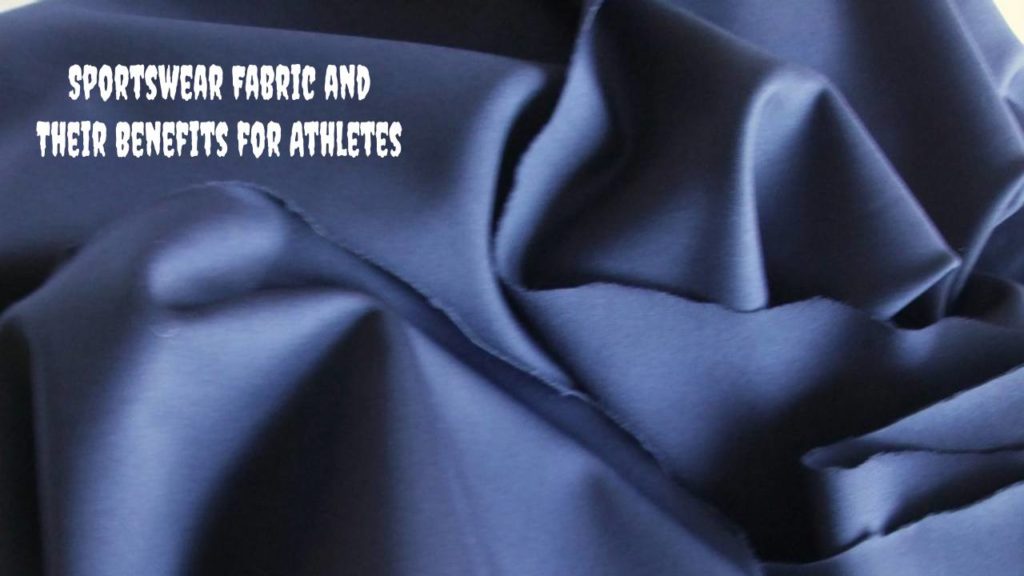Sportswear fabric plays a vital role in helping athletes perform at their best. The right choice of fabric can greatly enhance an athlete’s comfort, agility, and overall performance.
Whether it’s moisture-wicking materials keeping sweat at bay during intense workouts or breathable mesh fabrics allowing for better airflow, sportswear fabrics are designed to meet the unique needs of active individuals.
In this article, we will explore the various benefits of sportswear fabrics for athletes, highlighting how these innovative textiles positively impact athletic performance. Let’s dive into the world of sportswear fabrics and discover how they can take an athlete’s game to new heights.
Performance-Enhancing of Sportswear Fabrics
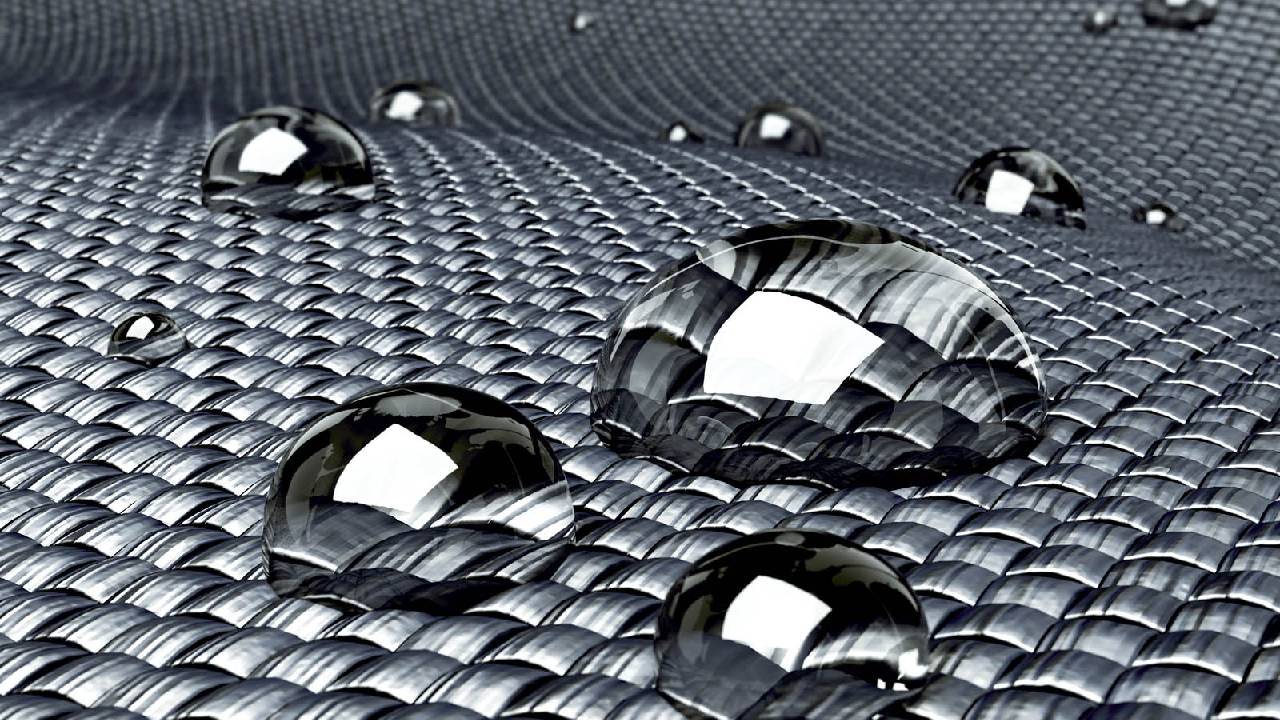
Sportswear fabric plays a crucial role in improving an athlete’s performance by offering specific features that enhance comfort and functionality. Performance-enhancing fabrics are designed to optimize an athlete’s capabilities, and they come in various types, each with unique advantages. Let’s explore some of the most popular performance-enhancing fabrics used in sportswear:
Moisture-Wicking Fabrics
Moisture-wicking fabrics are specially designed textiles that efficiently draw moisture away from the skin, keeping athletes dry and comfortable during intense workouts. These innovative fabrics use hydrophobic properties to absorb sweat and quickly transfer it to the fabric’s outer surface, where it can evaporate into the air.
Sportswear fabrics with excellent moisture-wicking properties efficiently manage moisture, minimizing the risk of skin irritations, chafing, and overheating. Athletes can maintain peak performance, staying focused and undistracted, all thanks to the superior moisture management of these high-performance textiles.
Definition and Mechanism:
Moisture-wicking fabrics are specially engineered materials designed to draw moisture away from the skin and rapidly evaporate it. These fabrics contain advanced hydrophobic properties, repelling water and effectively managing sweat.
When an athlete engages in intense physical activity, their body naturally sweats to regulate temperature. Moisture-wicking fabrics excel at efficiently absorbing this sweat and transferring it to the fabric’s outer surface, where it quickly evaporates into the air.
Advantages for Athletes:
The benefits of moisture-wicking fabrics are invaluable to athletes. By efficiently managing sweat, these fabrics help maintain a dry and comfortable environment close to the skin, reducing the risk of skin irritations and chafing. As a result, athletes can stay focused and perform at their best without distractions caused by excessive moisture.
Moreover, by regulating body temperature, moisture-wicking fabrics aid in preventing overheating during intense workouts, ensuring peak performance throughout training sessions or competitions.
Breathable Mesh Fabrics
Breathable mesh fabrics are a game-changer for athletes, offering optimal airflow and ventilation during intense workouts. Their open-weave structure enables air circulation, keeping athletes cool and comfortable. The superior breathability of mesh fabrics enhances performance and ensures athletes can train and compete with unrestricted ease.
How MeshWorks:
Sportswear fabrics with breathable mesh are distinguished by their open-weave structure, enabling unrestricted airflow. These fabrics provide optimal ventilation and breathability, making them ideal for sportswear. Strategically placed mesh panels in garments, such as shirts and shorts, ensure specific body areas benefit from enhanced airflow, keeping athletes cool and comfortable during physical activities.
Enhanced Airflow and Comfort:
Sportswear fabrics with breathable mesh offer a significant advantage by promoting better airflow, ensuring athletes remain cool and comfortable during demanding physical activities. Adequate ventilation prevents excessive sweating and reduces the risk of heat-related discomfort or fatigue. With these breathable textiles, athletes can fully concentrate on their performance without feeling burdened by heavy or stifling clothing.
Compression Fabrics
Compression fabrics provide a snug, supportive fit that improves blood circulation and reduces muscle fatigue during physical activities. These elastic textiles aid in faster recovery, enhance endurance and minimize the risk of injuries. Athletes benefit from compression technology for improved performance and overall well-being.
Understanding Compression Technology:
Compression fabrics are engineered with elastic fibers that provide a snug, yet comfortable, fit around the body. These fabrics exert graduated pressure, meaning they are tighter in certain areas and gradually loosen in others. The compression technology promotes blood circulation and helps support muscles during exercise.
Improved Circulation and Recovery:
Sportswear fabric with compression technology offers significant benefits to athletes, enhancing blood flow to working muscles and improving oxygen delivery while reducing lactic acid buildup. This increased circulation results in improved endurance, reduced muscle fatigue, and faster recovery after intense workouts. Additionally, compression garments provide a supportive fit that helps prevent muscle oscillation and reduces the risk of injuries.
Lightweight Synthetic Fabrics
Lightweight synthetic fabrics offer athletes agility and speed without compromising on durability. Made from materials like polyester and nylon, these fabrics excel in moisture management, providing a dry and comfortable experience during intense workouts. Athletes enjoy the freedom to move effortlessly, making them ideal for high-performance sportswear.
Characteristics of Lightweight Fabrics:
Lightweight synthetic fabrics are engineered to be light, yet durable, making them ideal for high-performance sportswear. These fabrics are often made from synthetic fibers like polyester, nylon, or polypropylene, which offer excellent moisture management and quick-drying properties.
Enhancing Agility and Speed:
Sportswear fabrics that are lightweight enable athletes to move with greater freedom, enhancing agility and speed in various sports and activities. Furthermore, their quick-drying properties ensure athletes remain dry and comfortable during intense workouts, avoiding the discomfort of heavy, sweat-soaked clothing.
The perfect combination of lightweight design and moisture-wicking capabilities makes these fabrics a popular choice for athletes striving to achieve peak performance.
1st part end…
Incorporating sportswear fabrics designed for performance enhancement is essential for athletes seeking to maximize their potential and maintain comfort during rigorous physical activities. Whether it’s moisture-wicking, breathable mesh, compression, or lightweight synthetic fabrics, the right choice of sportswear textiles can make a significant difference in an athlete’s overall performance and well-being.
Temperature Regulation Fabrics
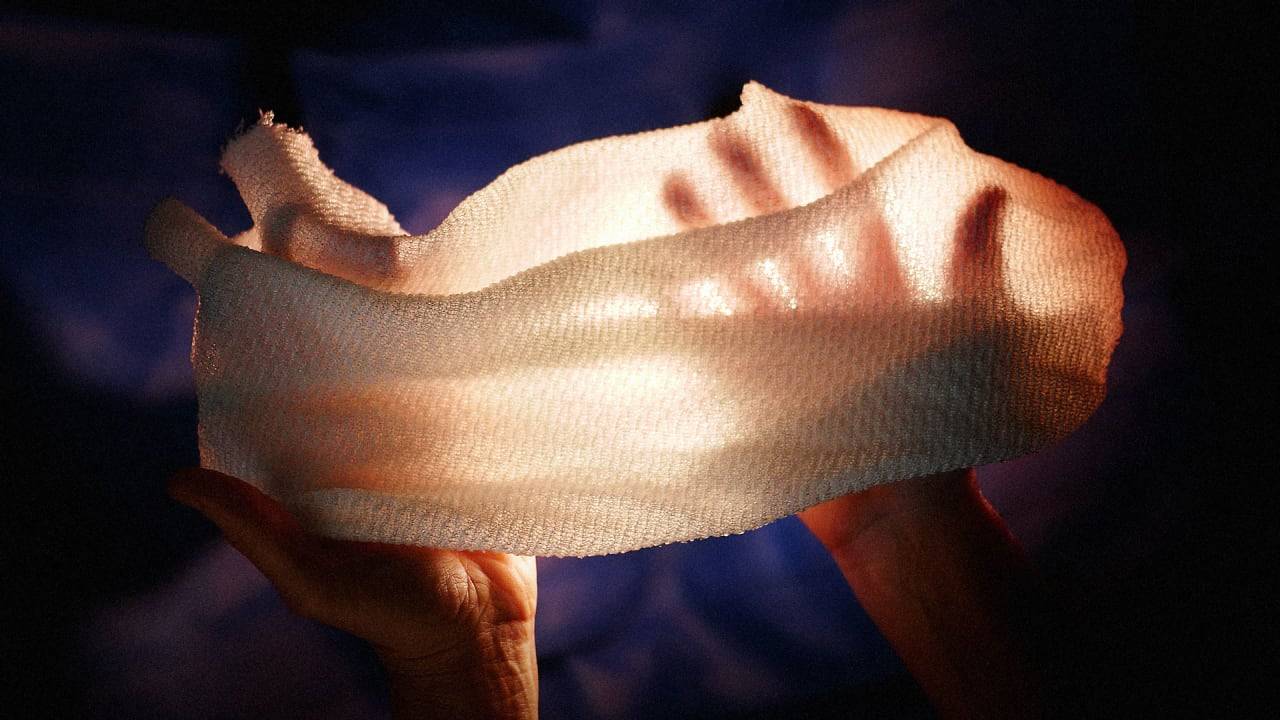
Sportswear textiles that offer effective temperature regulation are essential for athletes to perform optimally in various weather conditions. These fabrics help athletes stay comfortable by either retaining body heat in colder environments or promoting heat dissipation in hot conditions. Let’s delve into the details of temperature regulation fabrics and their benefits:
Insulating Fabrics
Insulating fabrics create a warm microclimate around athletes, retaining body heat in colder conditions. These fabrics provide a protective barrier against chilly air, ensuring athletes stay comfortable and flexible during outdoor activities in low temperatures. Insulating fabrics are essential for winter sports and cold-weather training, optimizing performance in adverse climates.
Retaining Body Heat in Cold Conditions:
Insulating sportswear weaves are designed to trap body heat and create a warm microclimate around the athlete’s skin. In colder weather or during outdoor activities in low temperatures, these fabrics act as a protective barrier against the chilly air, helping to maintain a comfortable and consistent body temperature.
Maintaining Optimal Performance:
By retaining body heat, insulating fabrics prevent the athlete from experiencing the discomfort and distraction of feeling cold. When the body stays warm, muscles can maintain their flexibility, and athletes can perform at their best without stiffness or reduced mobility. Insulating sportswear is especially beneficial for winter sports, outdoor workouts in chilly climates, or early morning training sessions.
Cooling Fabrics
Cooling fabrics are designed to dissipate heat and manage moisture during intense workouts or hot weather. These innovative textiles employ advanced moisture-wicking properties, allowing sweat to evaporate quickly and keeping athletes cool and dry. Cooling fabrics prevent overheating, enabling athletes to perform at their best even in scorching temperatures.
Strategies for Heat Dissipation:
Cooling sportswear textiles employ various strategies to help dissipate heat and keep the athlete cool during intense physical activities or hot weather conditions. These fabrics often have advanced moisture-wicking properties that efficiently absorb sweat from the skin’s surface and allow it to evaporate quickly.
Reducing the Risk of Overheating:
Overheating during exercise can lead to discomfort, fatigue, and even heat-related illnesses. Cooling sportswear fabrics actively work to reduce the risk of overheating by efficiently managing moisture and promoting evaporation. This cooling effect helps athletes stay comfortable and focused on their performance, even in scorching temperatures.
Furthermore, cooling sportswear textiles not only wick away sweat but also employ breathable properties that allow for increased airflow, contributing to the overall cooling effect on the body.
Thermal regulation is a key factor in the design of temperature-controlled fabrics, ensuring that athletes can focus on their performance without being hindered by extreme temperatures.
Insulating fabrics keep athletes warm and flexible in colder environments while cooling fabrics efficiently manage moisture and dissipate heat to prevent overheating during intense workouts or hot weather. By incorporating temperature-regulating sportswear fabric into their training and competition attire, athletes can maintain optimal performance and enjoy a more enjoyable and productive experience in their chosen sports.
Durability and Resilience
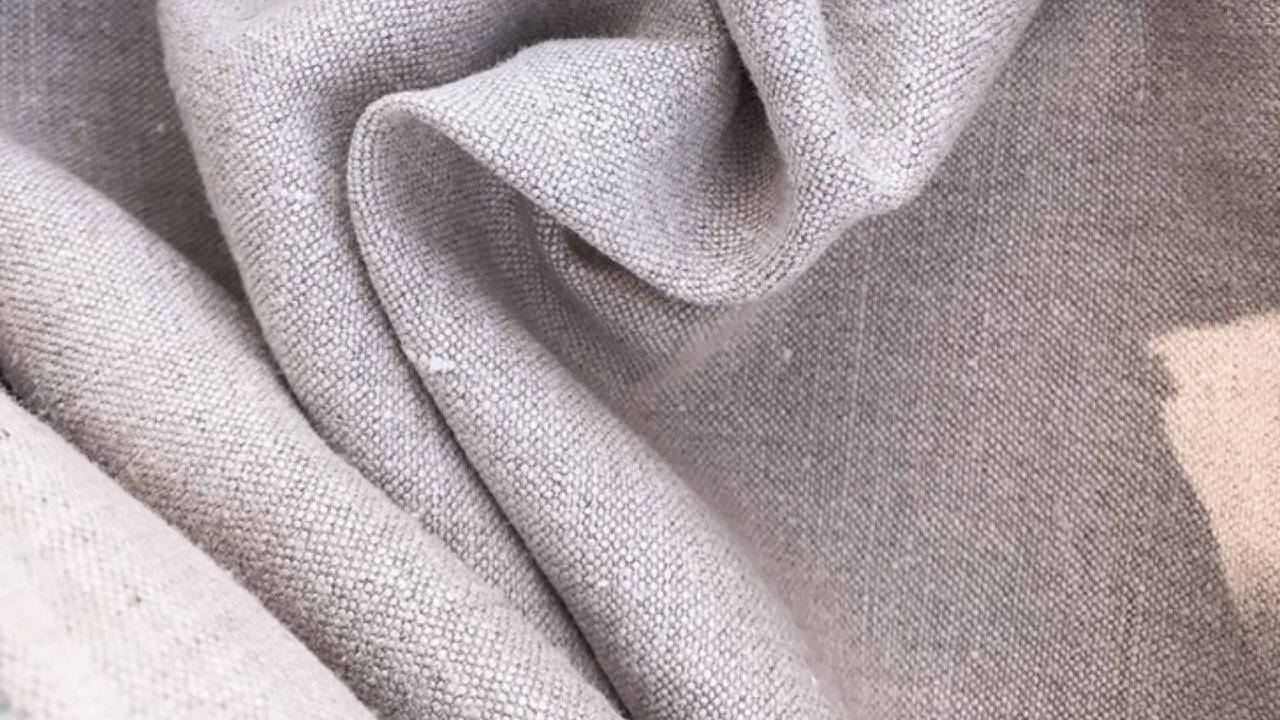
When it comes to sportswear weaves, durability, and resilience are essential factors to consider. Athletes engage in rigorous activities that put their clothing to the test, making it crucial for sportswear textiles to withstand wear and tear while providing the necessary flexibility for optimal performance. Let’s explore two types of sportswear fabrics known for their durability and resilience:
Abrasion-Resistant Fabrics
Abrasion-resistant fabrics are engineered to withstand friction and wear, providing durable and long-lasting sportswear. These fabrics protect against everyday wear and tear during high-impact activities, ensuring athletes’ clothing remains in excellent condition. With abrasion-resistant fabrics, athletes can focus on their performance without worrying about fabric damage or deterioration.
Protection Against Wear and Tear:
Abrasion-resistant sportswear textiles are engineered to withstand friction and rubbing, providing a protective shield against everyday wear and tear. During high-impact sports or activities that involve repetitive movements, such as running, cycling, or rock climbing, the fabric comes in contact with various surfaces, which can lead to damage and deterioration over time. Abrasion-resistant fabrics excel at preserving the integrity of the sportswear, ensuring it remains in excellent condition for an extended period.
Ideal for High-Impact Activities:
For athletes participating in high-impact activities, having sportswear made from abrasion-resistant fabrics is a game-changer. These fabrics not only protect the clothing itself but also safeguard the athlete’s skin from potential abrasions and irritations. By minimizing the risk of fabric tears and fraying, athletes can focus on their performance without worrying about the longevity of their sportswear.
Stretchable Fabrics
Stretchable fabrics offer athletes flexibility and unrestricted movement during physical activities. These elastic textiles adapt to the body’s contours, providing a comfortable and supportive fit. Whether it’s stretching, jumping, or dynamic movements, stretchable fabrics allow athletes to perform at their best without feeling constrained or restricted.
Flexibility and Freedom of Movement:
Stretchable sportswear textiles offer exceptional elasticity, allowing athletes to move with unrestricted freedom. Whether it’s stretching, jumping, or performing dynamic movements, these fabrics adapt to the body’s contours, providing a comfortable fit and ensuring a full range of motion. Athletes can perform at their best without feeling constrained by their clothing.
Preventing Rips and Tears:
The flexibility of stretchable fabrics not only enhances comfort but also contributes to their resilience. When athletes engage in intense physical activities, there is a risk of fabric tearing or ripping, particularly in areas under stress. Stretchable sportswear fabrics can withstand such strain, reducing the likelihood of tears and ensuring the sportswear remains intact during challenging workouts or competitions.
Moreover, the combination of abrasion-resistant and stretchable properties makes sportswear textiles durable and resilient, enabling athletes to perform at their best while keeping their clothing in top condition.
Athletes can rely on tear-resistant fabrics designed to endure the toughest training sessions and competitions.
Abrasion-resistant fabrics protect against wear and tear, making them ideal for high-impact sports, while stretchable fabrics offer flexibility and prevent rips and tears during dynamic movements. By choosing sportswear fabrics that prioritize durability and resilience, athletes can focus on their performance with confidence, knowing their clothing can withstand the challenges of their chosen sports.
Odor-Resistant Fabrics
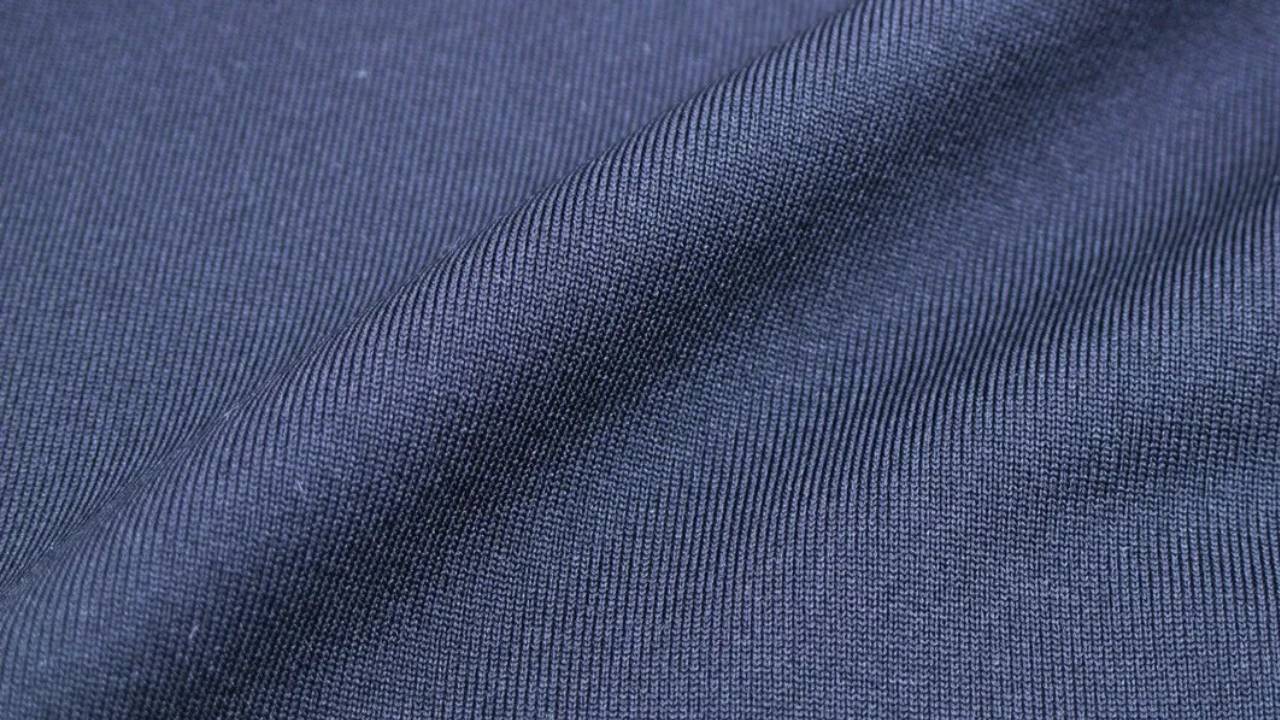
Sportswear textiles that offer odor resistance are essential for athletes who engage in intense physical activities. These fabrics utilize advanced technologies to neutralize and prevent unpleasant odors, ensuring athletes stay fresh and confident throughout their workouts. Let’s explore the details of odor-resistant sportswear weaves:
Odor-Neutralizing Technology
Odor-neutralizing technology in sportswear textiles inhibits the growth of odor-causing bacteria, ensuring athletes stay fresh and confident during intense workouts. These innovative textiles target the root cause of unpleasant odors, creating a comfortable and odor-free experience. Athletes can focus on their performance without worrying about unwanted smells.
How Odor-Resistant Fabrics Work:
Odor-resistant sportswear cloths employ innovative technologies that target the root cause of unpleasant odors. During exercise, the body produces sweat, which creates an environment conducive to bacterial growth. Bacteria break down the sweat, resulting in the release of foul-smelling odor molecules. Odor-resistant fabrics contain antimicrobial agents that inhibit the growth of odor-causing bacteria. These agents act as a barrier, preventing bacteria from proliferating and minimizing the development of unpleasant odors on the fabric.
Benefits During Prolonged Workouts:
The application of odor-neutralizing technology in sportswear textiles offers several benefits during prolonged workouts. As the antimicrobial agents work to combat bacteria, athletes can remain confident that their sportswear will not develop an unwelcome smell even after intense sweating. Additionally, odor-resistant fabrics help maintain a fresh and clean feeling throughout extended training sessions or competitions, boosting comfort and focus.
Furthermore, odor-resistant sportswear fabrics not only keep the athlete feeling fresh but also contribute to maintaining the overall longevity of the clothing. Odor-controlling fabrics with antibacterial properties are becoming increasingly popular among athletes who seek optimal comfort and confidence during their physical activities.
By utilizing advanced odor-neutralizing technology, these fabrics provide a fresh and clean feeling, enhancing the overall comfort and confidence of athletes during prolonged exercise. Choosing sportswear textiles with odor resistance ensures athletes can focus on their performance without worrying about unwanted odors, maintaining a positive and comfortable workout experience.
Eco-Friendly Sportswear Clothes
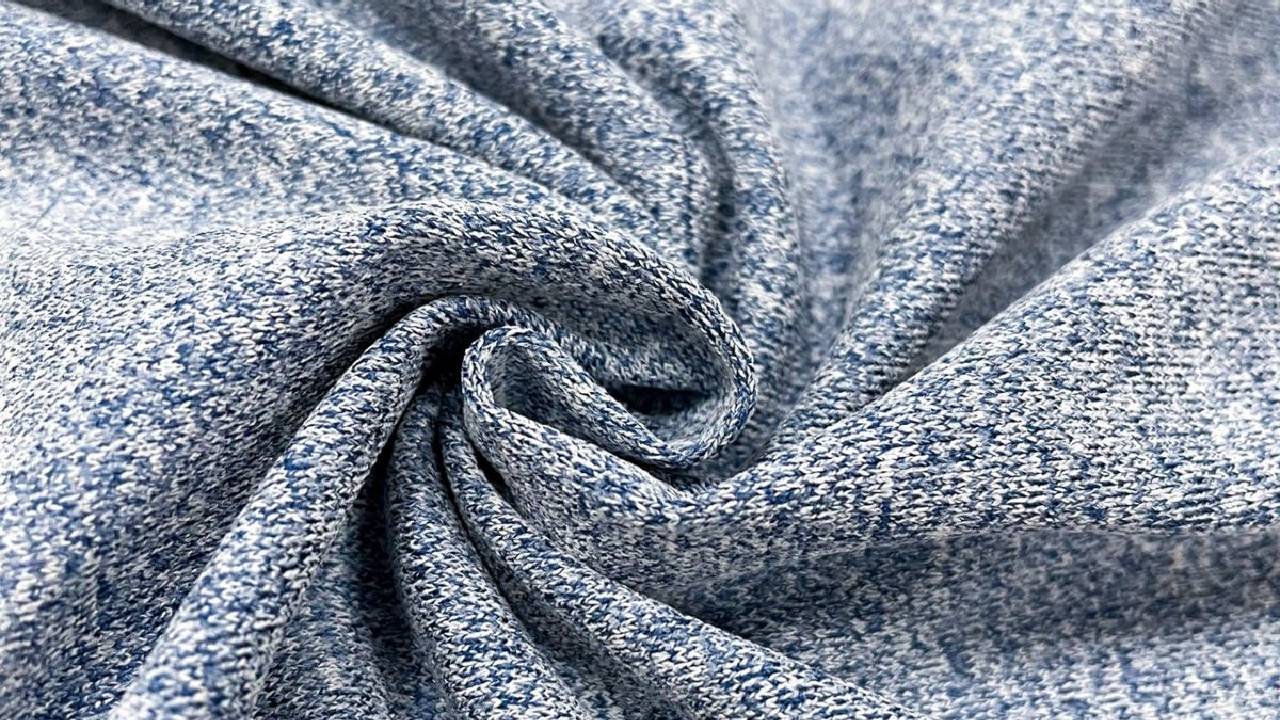
In recent years, there has been a growing emphasis on sustainability and environmental consciousness in the fashion industry, including sportswear weaves. Eco-friendly sportswear textiles are designed with a focus on reducing their environmental impact while providing athletes with high performance and comfort. Let’s explore the details of eco-friendly sportswear textiles and their benefits:
Sustainable Materials
Sustainable materials used in sportswear cloths are sourced from renewable resources, minimizing environmental impact. These eco-friendly textiles, such as organic cotton, bamboo, and Tencel, prioritize environmental consciousness in the fashion industry. By choosing sustainable materials, athletes contribute to the conservation of natural resources and support ethical and eco-conscious practices.
Environmentally Conscious Choices:
Eco-friendly sportswear textiles are crafted using sustainable materials, such as organic cotton, bamboo, hemp, and Tencel. These materials are sourced from renewable resources and cultivated with eco-friendly practices that minimize the use of pesticides and harmful chemicals. By choosing fabrics made from sustainable materials, athletes can actively contribute to the conservation of natural resources and the preservation of biodiversity.
Reducing the Carbon Footprint:
The production of eco-friendly sportswear fabrics aims to reduce the carbon footprint associated with traditional fabric manufacturing processes. Sustainable materials often require less energy and water during production, resulting in lower greenhouse gas emissions. Additionally, eco-friendly sportswear brands may prioritize locally sourced materials and ethical manufacturing processes, further minimizing their environmental impact.
Moreover, the use of sustainable materials in eco-friendly sportswear textiles aligns with the growing awareness of environmental responsibility among athletes and consumers.
Athletes are increasingly embracing eco-conscious fabrics, recognizing their role in promoting sustainability in the sportswear industry.
Recycled Fabrics
Recycled fabrics in sportswear are made from post-consumer waste like plastic bottles and discarded textiles, reducing the demand for new raw materials. By repurposing these materials, athletes support circular economy initiatives, promoting sustainability and minimizing waste in the fashion industry. Recycled fabrics give new life to old materials, creating eco-friendly sportswear options.
Giving New Life to Old Materials:
Recycled sportswear cloths are made from post-consumer waste, such as plastic bottles, discarded textiles, and fishing nets recovered from oceans. By repurposing these materials, the production of recycled fabrics reduces the demand for new raw materials, conserving resources and diverting waste from landfills.
Support for Circular Economy Initiatives:
The adoption of recycled sportswear textiles supports circular economy initiatives. The circular economy aims to minimize waste and keep products and materials in use for as long as possible through recycling, reusing, and repurposing. By choosing sportswear made from recycled materials, athletes contribute to the closing of the material loop and promote sustainable consumption practices.
Furthermore, recycled sportswear weaves not only address waste reduction but also highlight the importance of closing the loop in the fashion industry. Athletes can make a significant impact on the environment by opting for upcycled sportswear that aligns with their values of sustainable fashion choices.
By utilizing sustainable materials and incorporating recycled fabrics, sportswear brands support circular economy initiatives and promote sustainable consumption practices. Athletes can make a positive difference by choosing sportswear textiles that contribute to a more sustainable and eco-conscious future.
Specialized Sportswear Clothes
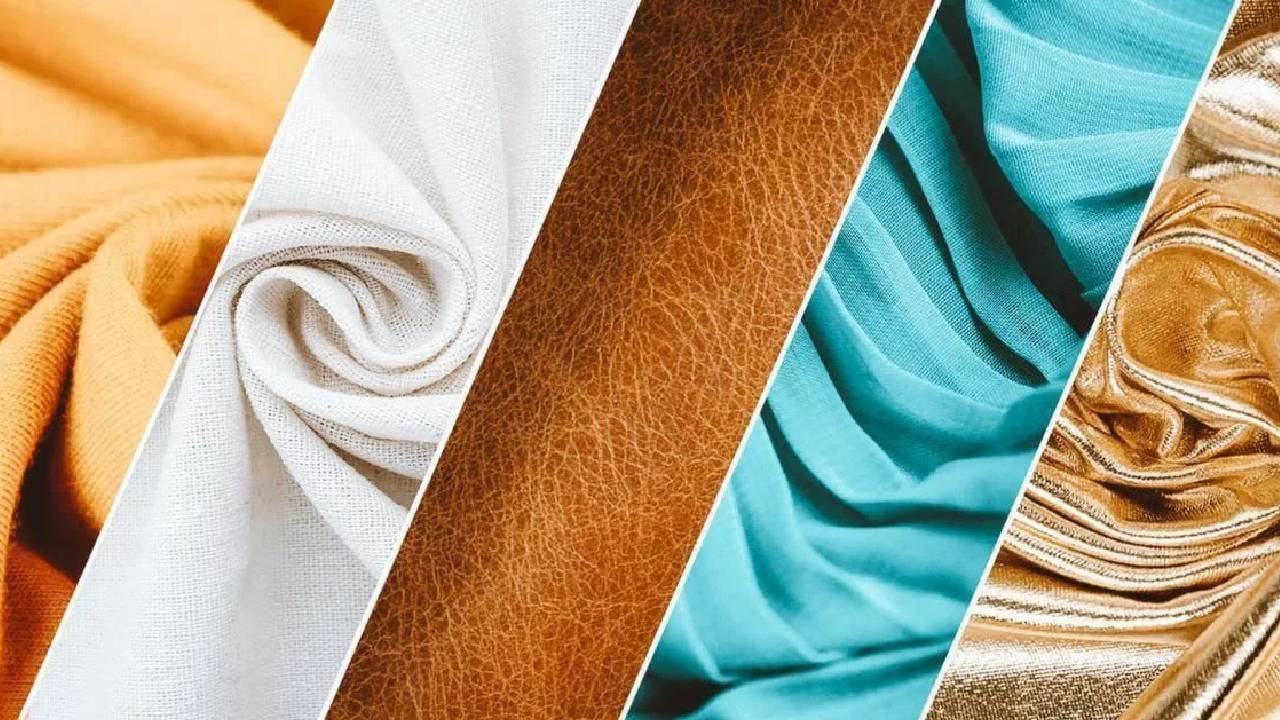
Specialized sportswear textiles are designed to cater to the unique needs of athletes participating in specific sports and activities. These fabrics are engineered with performance-enhancing properties that optimize an athlete’s experience and results. Let’s explore the details of specialized sportswear fabrics for swimwear, running apparel, and cold-weather sportswear:
Swimwear Fabrics
Swimwear fabrics are designed with water-repellent and quick-drying properties, ideal for swimmers. These hydrophobic textiles reduce drag in the water and provide enhanced speed during races. With their ability to stay dry and lightweight, swimwear fabrics offer optimal comfort and performance in the water, supporting athletes during aquatic activities.
Water-Repellent and Quick-Drying Properties:
Swimwear fabrics are crafted with water-repellent properties that prevent the absorption of water. These fabrics help reduce drag in the water, allowing swimmers to glide smoothly and maintain their speed during races. Additionally, swimwear fabrics are quick-drying, ensuring that athletes remain comfortable after leaving the water and during post-swim activities.
Enhancing Performance in the Water:
The hydrophobic nature of swimwear fabrics plays a pivotal role in enhancing performance. By repelling water, the fabric reduces resistance, enabling swimmers to move more efficiently. Furthermore, the quick-drying properties minimize water retention, preventing the swimwear from becoming heavy and restrictive during races and training sessions.
Running Apparel Fabrics
Running apparel fabrics are engineered for impact resistance and breathability. These textiles provide support to muscles and joints during high-intensity workouts, while their breathable properties facilitate effective moisture-wicking and ventilation. The flexibility of running apparel fabrics allows for unrestricted movement, enabling runners to perform at their best and achieve peak efficiency.
Impact-Resistance and Breathability:
Running apparel fabrics are designed to withstand the impact of repetitive movements and provide the necessary support to muscles and joints. These fabrics often feature a combination of durability and elasticity, which contributes to their impact-resistant properties. Additionally, running apparel fabrics prioritize breathability, allowing for effective moisture-wicking and ventilation during intense workouts.
Boosting Running Efficiency:
The choice of running apparel fabric can significantly impact a runner’s performance. Lightweight and breathable fabrics facilitate efficient heat dissipation, preventing overheating during long runs. The flexibility of these fabrics ensures unrestricted movement, enabling runners to maintain their stride and achieve peak performance.
Cold Weather Sportswear Textiles
Cold-weather sportswear textiles offer thermal insulation and wind resistance, keeping athletes warm and protected in chilly conditions. Designers create these textiles to retain body heat, preventing muscle stiffness and ensuring flexibility during cold-weather training. With their cold-weather advantages, athletes can train comfortably and perform optimally in adverse climates.
Thermal Insulation and Wind Resistance:
Cold-weather sportswear cloths are engineered to provide thermal insulation, retaining body heat and keeping athletes warm in chilly conditions. These fabrics also exhibit wind resistance, preventing cold air from penetrating the clothing and maintaining a comfortable microclimate around the body.
Cold-Weather Training Advantages:
The thermal properties of cold-weather sportswear textiles offer several advantages during training in colder climates. By keeping the body warm, these fabrics help prevent muscle stiffness and improve overall flexibility. Athletes can maintain their performance and training routines even in adverse weather conditions, optimizing their preparation for competitions.
Furthermore, the specialized properties of swimwear, running apparel, and cold-weather sportswear weaves play a crucial role in supporting athletes’ performance and comfort during specific sports and activities. Technical running fabrics offer runners the advantage of lightweight and breathable materials that enhance their running experience.
Swimwear fabrics offer water-repellent and quick-drying properties for improved performance in the water while running apparel fabrics prioritize impact resistance and breathability to boost running efficiency. Cold-weather sportswear textiles provide thermal insulation and wind resistance, offering advantages during cold-weather training. Athletes can maximize their performance and comfort by choosing sportswear clothes tailored to their individual sports and activities.
Choosing the Right Sportswear Textiles
Selecting the appropriate sportswear textiles is essential for athletes to perform at their best and stay comfortable during various sports and activities. Each sport and climate demands specific features from sportswear fabrics to optimize an athlete’s performance. Consideration of individual preferences and comfort also plays a significant role in the decision-making process. Let’s explore the key factors to consider when choosing the right sportswear textiles:
Consideration of Sport and Activity Type:
Different sports and activities require specific properties from sportswear clothes. For example, swimmers may benefit from hydrophobic and quick-drying swimwear fabrics, while runners may prioritize lightweight and breathable materials for enhanced performance. High-impact sports may necessitate abrasion-resistant and stretchable fabrics to withstand rigorous movements. Understanding the demands of the chosen sport and activity will guide athletes in selecting the most suitable sportswear textiles.
Climate and Environmental Factors:
The climate and environmental conditions in which athletes will be training and competing are crucial considerations when choosing sportswear weaves. In hot and humid climates, people prefer moisture-wicking and cooling fabrics to prevent overheating and excessive sweating. On the other hand, cold weather calls for thermal insulation and wind-resistant properties to keep athletes warm and protected from chilly temperatures.
Individual Comfort and Preferences:
Every athlete has unique comfort preferences when it comes to sportswear textiles. Preferences vary some like cotton’s softness, while others prefer synthetic materials for stretch and flexibility in sportswear. Individual comfort and preferences ensure athletes feel confident in sportswear, focusing on performance without distractions for optimal results.
Additionally, individual comfort and preferences should be the guiding factors in selecting the most suitable sportswear clothes. Activity-specific sportswear ensures that athletes have the best fabric for their chosen sports and activities.
Selecting fabrics that enhance an athlete’s experience involves considering specific sports/activities, climate, and environmental factors. Individual comfort and preferences are equally important, ensuring that athletes feel confident and at ease in their sportswear. By making informed choices, athletes can elevate their performance and focus on achieving their goals in their chosen sports.
Caring for Sportswear Textiles
Proper care and maintenance of sportswear textiles are crucial to ensure their longevity, performance, and comfort. By following the right washing and drying techniques, athletes can preserve the quality of their sportswear and avoid common mistakes that may lead to fabric damage. Let’s explore the essential aspects of caring for sportswear fabrics:
Proper Washing and Drying Techniques:
- Read Care Instructions: Always check the care instructions provided by the manufacturer for your sportswear. These instructions will guide you on the appropriate washing and drying methods specific to the fabric type.
- Use Mild Detergent: When washing sportswear, opt for a mild detergent to prevent the buildup of harsh chemicals that may affect the fabric’s performance. Avoid using fabric softeners as they can reduce moisture-wicking capabilities.
- Wash in Cold Water: Washing sportswear in cold water helps preserve the integrity of the fabric and prevents color fading. It also reduces the risk of shrinkage, especially for synthetic materials.
- Avoid Harsh Washing Techniques: Refrain from using harsh washing techniques such as scrubbing or wringing the fabric vigorously. Gently hand wash or use a gentle cycle in the washing machine to prevent unnecessary wear.
- Air Dry Whenever Possible: To avoid heat damage, consider air-drying sportswear whenever possible. Hang garments on a drying rack or clothesline, away from direct sunlight, to maintain their shape and elasticity.
2nd part end…
Extending the Lifespan of Sportswear:
- Rotate Sportswear: Rotate your sportswear pieces regularly to distribute the wear evenly. This prevents the overuse of specific garments, prolonging the overall lifespan of your sportswear collection.
- Store Properly: Store sportswear in a cool, dry place to prevent moisture buildup and mold growth. Avoid leaving damp or sweaty garments in gym bags for extended periods.
- Address Stains Promptly: Treat stains as soon as possible to prevent them from setting into the fabric. Follow stain removal guidelines according to the fabric type to avoid damage.
- Avoid High-Friction Surfaces: Be mindful of where you sit or lean while wearing sportswear to avoid excessive friction, which can cause fabric pilling and abrasion.
Avoiding Common Mistakes:
- Using High Heat in Drying: Avoid using high heat settings in the dryer, as this can damage elastic fibers and shrink certain fabrics. Instead, opt for low or delicate heat settings.
- Overloading the Washing Machine: Overloading the washing machine can lead to inadequate cleaning and may result in tangling and damage to the fabric.
- Ignoring Care Labels: Always pay attention to care labels and follow the recommended guidelines to ensure proper care for the specific sportswear fabric.
Additionally, proper care techniques are vital in maintaining the quality and performance of sportswear textiles. Following the correct laundry methods and fabric care tips achieves long-lasting sportswear.
Proper washing, drying, avoiding mistakes, and proactive preservation ensures athletes enjoy high-quality sportswear for a prolonged period. A little fabric care ensures sportswear stays excellent, supporting athletes in training and competitions effectively for the long term.
Conclusion
In conclusion, sportswear fabrics play a pivotal role in enhancing an athlete’s performance and overall experience. Athletes benefit from the right sportswear textiles: moisture-wicking, breathability, compression, and durability ensure dryness, comfort, airflow, and recovery.
Additionally, temperature-regulating fabrics keep athletes cool in hot conditions and warm in cold weather, while odor-resistant fabrics ensure a fresh feeling even during prolonged workouts. When choosing sportswear fabric, it is essential to consider the specific requirements of the sport and activity, as well as individual comfort and preferences.
To experience the full potential of sportswear textiles and to explore a wide range of high-quality sportswear, look no further than Rompvela International. As a leading manufacturer and exporter of sportswear, Rompvela International is committed to providing athletes with top-notch performance apparel designed with the latest sportswear fabric innovations.
Elevate your athletic journey with Rompvela’s cutting-edge sportswear and unlock your true potential in every sport and activity. Embrace the power of sportswear textiles and take your performance to new heights with Rompvela International!

